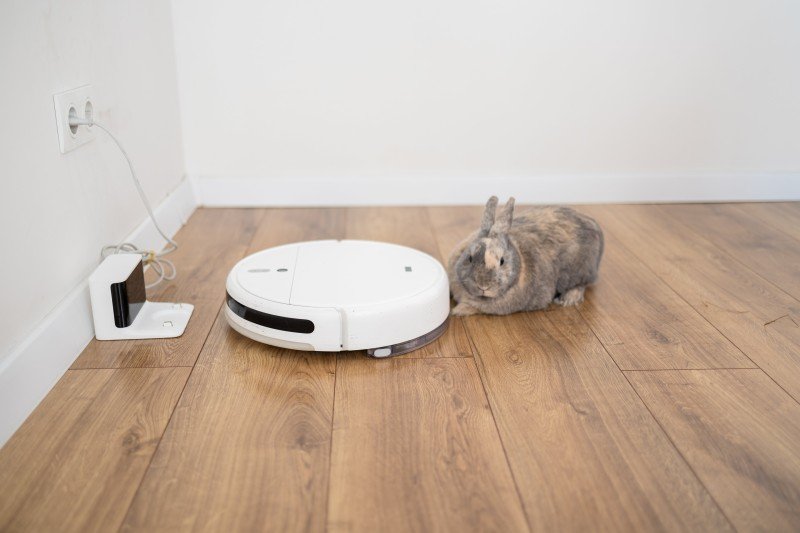The Rise of Robotic Vacuums: A Comprehensive Guide
In the fast-paced world of technological advancements, the integration of robotics into everyday household tasks has reinvented the method people keep their homes. Among the most popular and practical developments is the robotic vacuum cleaner, a gadget designed to autonomously clean floors, reducing the requirement for manual labor. This post looks into the evolution, performance, benefits, and future of robotic vacuums, supplying a comprehensive guide for those thinking about adding one to their household.
The Evolution of Robotic Vacuums
The idea of a robotic vacuum cleaner go back to the late 20th century, but it wasn't up until the early 2000s that these devices became commercially practical. The first widely acknowledged robotic vacuum, the iRobot Roomba, was presented in 2002. Ever since, best automatic vacuum and mop has actually advanced considerably, with contemporary designs including sophisticated navigation systems, powerful suction, and smart home integration.
Key Milestones:
- 2002: Introduction of the iRobot Roomba - The first commercially effective robotic vacuum.
- 2005: Advanced Navigation - Integration of infrared sensing units and cliff detection to avoid falls.
- 2010: Wi-Fi Connectivity - Allowing push-button control and scheduling via smartphone apps.
- 2015: Mapping and Zoning - Advanced mapping innovation for more efficient cleaning.
- 2020: AI and Machine Learning - Enhanced navigation and cleaning patterns through expert system.
How Robotic Vacuums Work
Robotic vacuums operate using a mix of sensing units, algorithms, and motors. Here's a breakdown of the key components and processes:
- Sensors: These include infrared, ultrasonic, and optical sensing units that assist the vacuum discover obstacles, edges, and dirt. Some designs also use video cameras for visual mapping.
- Mapping and Navigation: Advanced designs use SLAM (Simultaneous Localization and Mapping) innovation to develop a map of the cleaning location and navigate effectively.
- Suction and Brushes: Robotic vacuums utilize effective motors to produce suction and numerous brushes to get dirt and particles. Some designs consist of side brushes to reach into corners.
- Battery and Charging: Most robotic vacuums are geared up with rechargeable lithium-ion batteries. They go back to their charging dock when the battery is low.
- Smart Home Integration: Many models can be managed through smart device apps, voice assistants like Amazon Alexa or Google Assistant, and can be integrated into smart home systems.
Advantages of Robotic Vacuums
- Convenience: One of the most considerable benefits is the benefit of hands-free cleaning. Users can set up cleansings or start them from another location, enabling a tidy home without the effort.
- Effectiveness: Modern robotic vacuums are developed to clean efficiently, covering large areas and navigating around challenges with ease.
- Long-Term Savings: While the preliminary cost may be greater, the long-lasting cost savings on manual cleaning tools and the time saved can be considerable.
- Allergy Relief: Regular cleaning can help in reducing irritants in the home, making it an advantageous financial investment for allergic reaction patients.
- Eco-Friendly: Many designs are energy-efficient and use recyclable products, making them a more sustainable cleaning choice.
Popular Models and Features
iRobot Roomba i7+
- Features: Advanced mapping, automatic dirt disposal, Wi-Fi connectivity, and voice control.
- Rate Range: ₤ 600 - ₤ 1,000
Dyson 360 Heurist
- Features: 360-degree video camera for mapping, effective suction, and HEPA purification.
- Rate Range: ₤ 600 - ₤ 800
Ecovacs Deebot Ozmo T8
- Functions: TrueMapping navigation, mopping abilities, and voice control.
- Rate Range: ₤ 500 - ₤ 700
Neato D7
- Functions: Laser navigation, big cleaning area, and app control.
- Cost Range: ₤ 500 - ₤ 700
Future Trends in Robotic Vacuums
The future of robotic vacuums is appealing, with continuous improvements in innovation. Some patterns to view for include:
- Enhanced AI and Machine Learning: More advanced algorithms will allow better navigation, barrier avoidance, and cleaning performance.
- Integration with Smart Home Ecosystems: Increased compatibility with various smart home devices and platforms.
- Improved Battery Life: Longer-lasting batteries to cover bigger locations without requiring to recharge.
- Multi-Functionality: Beyond vacuuming, future designs may consist of additional functions like air purification and surface cleaning.
Frequently asked questions
Q: Are robotic vacuums as effective as conventional vacuums?A: While they may not be as effective as high-end traditional vacuums, modern robotic vacuums are extremely reliable for routine cleaning jobs. They are especially helpful for preserving a clean home between deep cleans up.
Q: How frequently should I clean the filters and brushes?A: It is suggested to clean the filters and brushes after every couple of usages to make sure optimal efficiency. Speak with the user handbook for particular upkeep directions.
Q: Can robotic vacuums browse stairs?A: Most robotic vacuums are equipped with cliff sensors that avoid them from falling down stairs. However, they are not created to clean stairs.
Q: Are robotic vacuums noisy?A: Generally, robotic vacuums are quieter than standard vacuums. However, noise levels can vary by design. Some models use peaceful cleaning modes for nighttime usage.
Q: Can I utilize a robotic vacuum with family pets?A: Yes, many robotic vacuums are created to deal with pet hair and dander. Search for models with strong suction and specialized pet cleaning functions.
Robotic vacuums have actually come a long method considering that their inception, providing a practical, efficient, and eco-friendly solution to home cleaning. With ongoing improvements in technology, these gadgets are becoming more advanced and user-friendly. Whether you're looking to conserve time, lower irritants, or simply enjoy a cleaner home, a robotic vacuum is a beneficial financial investment. By comprehending the functions, advantages, and future patterns, you can make a notified decision to boost your home cleaning experience.

